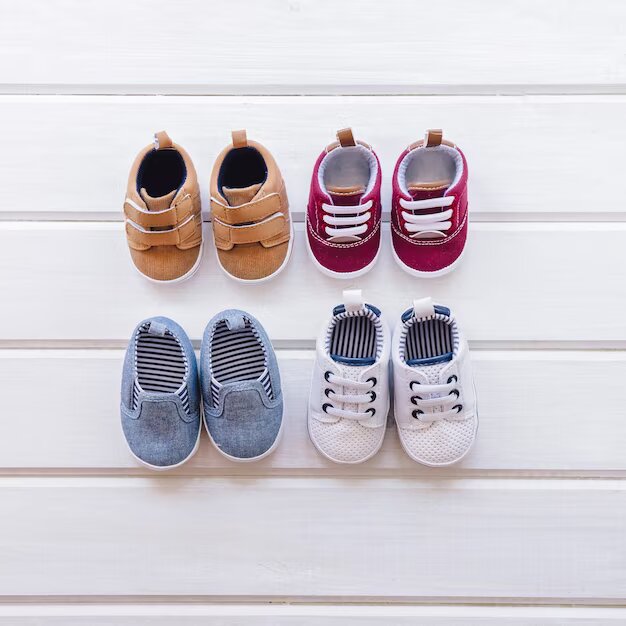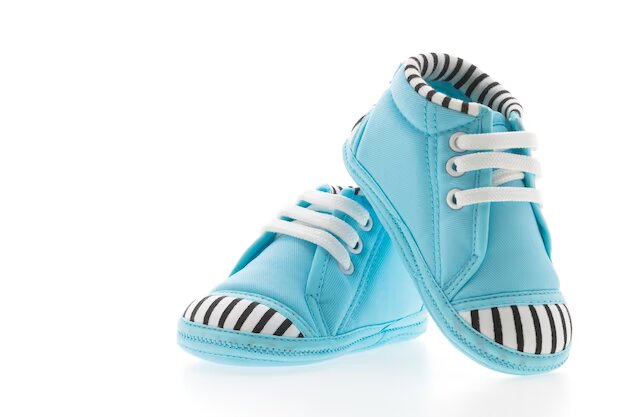LIFE WITH URBAN KIDDIES
Guide to choosing the best infant shoes
Introduction
As parents, you will strive to provide the best care and protection for your little ones, and choosing the right shoes for infants is no exception. Infant shoes play a crucial role in supporting their developing feet and ensuring proper foot development. Choosing the best infant shoes is a crucial decision that can impact your child’s foot development and overall comfort during their early years. However, selecting the perfect pair can be overwhelming due to the vast array of options available in the market.
In this comprehensive guide, we will walk you through all the essential factors to consider when choosing the best infant shoes, ensuring your little one takes their first steps with comfort and confidence.
Understanding Infant Foot Development when Choosing Infant Slippers
Before diving into the specifics of choosing the right shoes, it’s vital to understand the stages of infant foot development. Infants’ feet are delicate and undergo significant changes in their early years. Here are the key stages:
Birth to 6 Months: At birth, an infant’s feet are primarily soft cartilage. As they grow, the arches will begin to form and muscles will strengthen. During this stage, babies do not need shoes and should be barefoot or wear soft, flexible socks.
6 to 12 Months: As babies start to crawl and stand, their foot muscles strengthen further. Their feet will begin to resemble the arch structure more distinctly. At this stage, it is still best to allow them to go barefoot or wear flexible and non-restrictive soft-soled shoes to support their developing arches.
12 to 24 Months: Once toddlers begin walking, their feet undergo rapid growth and development. They will become more active and need shoes that provide adequate support and protection without compromising their mobility.

Key Considerations When Choosing Infant Slippers
When selecting infant shoes, there are several crucial factors to keep in mind to ensure the optimal development and comfort of your child’s feet.
1. Flexibility
Infant shoes should be highly flexible to mimic the natural movement of their feet. Avoid rigid or stiff-soled shoes, as they can hinder the development of foot muscles and natural gait.
2. Breathability
Look for shoes made from breathable materials, such as leather or mesh, to prevent excessive sweating and keep the feet dry and comfortable.
3. Proper Fit
Finding the right infant shoe size fit is crucial. Measure your baby’s feet regularly as their size can change rapidly in their early years. Ensure the shoes provide enough room for wiggling toes and a thumb’s width of space between the longest toe and the front of the shoe.
4. Supportive Heel Counter
The heel counter should be firm but not overly rigid to provide support during walking while still allowing natural movement.
5. Easy Fastening
Opt for proper infant shoe size with adjustable and easy-to-use fastenings, such as velcro straps or elastic laces, to ensure a secure fit and quick on/off.
6. Non-Slip Outsole
The outsole should offer excellent traction to prevent slipping and support the child’s stability as they explore their environment.
7. Toe Protection
A durable toe cap or bumper can protect little toes from bumps and bruises during play and exploration.
8. Lightweight Design
Choose lightweight shoes to avoid adding unnecessary strain on your child’s developing legs and feet.
9. Age-Appropriate Styles
Select shoes suitable for your child’s age and developmental stage. For instance, pre-walkers need soft-soled shoes, while walkers require more structured footwear.
10. Quality Materials
Invest in high-quality materials to ensure the right infant shoe size is durable and provides adequate support throughout your child’s developmental journey.

More key considerations of infant slippers
Avoiding Common Pitfalls
As parents, it’s essential to be aware of common pitfalls and mistakes when selecting infant shoes.
Wrong Size: Avoid buying rain boots that are too big or too small for your child. Oversized boots may cause tripping and discomfort, while undersized boots can restrict foot movement and lead to discomfort.
Ignoring Growth: Infants’ feet grow rapidly, and rain boots that fit well today may not fit in a few months. Consider leaving some room for growth when selecting the size.
Neglecting Sock Thickness: If your child will be wearing socks with rain boots, measure their feet with the socks on to ensure a proper fit. Neglecting sock thickness can lead to tight-fitting boots.
Non-Breathable Materials: Choose rain boots made from breathable materials to prevent excessive sweating and discomfort. Non-breathable boots can lead to sweaty, clammy feet.
Rigid and Uncomfortable Soles: Avoid rain boots with rigid and uncomfortable soles. Infants need flexible soles that allow natural foot movement and development.
Heavy Boots: Opt for lightweight rain boots to avoid adding unnecessary strain on your child’s developing legs and feet.
Poor Traction: Ensure the rain boots have a non-slip outsole to prevent slipping and provide stability during wet conditions.
Uncomfortable Lining: Check the lining of the rain boots to ensure it is soft and comfortable against your child’s skin. Rough or uncomfortable linings can cause irritation.
Long Boot Wear: While rain boots are ideal for wet weather, avoid having your child wear them for extended periods, especially indoors. Prolonged use can cause excessive sweating and discomfort.
Neglecting Signs of Discomfort: Pay attention to your child’s cues. If they seem uncomfortable or reluctant to wear the rain boots, they may not be the right fit or style.
Using Damaged Boots: Inspect the rain boots regularly for any signs of damage or wear. Replace them if they show signs of wear and tear, as damaged boots may not provide adequate protection.
Compromising on Quality: Invest in high-quality rain boots to ensure they are durable, waterproof, and provide the necessary support and protection.
Measuring Infant Rain Boots Based on Developmental Stages
1. Pre-Walker Shoes
Pre-walkers need soft-soled, flexible shoes or booties that allow for natural foot movement and development. Consider options with non-slip soles for added safety during crawling and cruising.
2. First Walker Shoes
For toddlers taking their first steps, look for the fitting infant shoe size with more structure and support. Flexible rubber soles and protective toe caps are essential features at this stage.
3. Toddler Shoes As your child becomes more proficient in walking, opt for the right infant shoe size with added stability and durability. Choose shoes with a bit more structure, but still maintain flexibility.
Tips for measuring Infant rain boots
Fitting infant shoes properly is vital to ensure comfort and optimal foot development.
Use a Soft Measuring Tape: Use a soft, flexible measuring tape to get precise measurements of your infant’s feet. Avoid using a rigid ruler, as it may not conform to the shape of their feet.
Measure Both Feet: It’s common for infants to have slightly different-sized feet. Measure both feet and use the larger measurement as the reference when choosing the size.
Measure in the Afternoon: Feet can swell slightly throughout the day, so it’s best to measure your baby’s feet in the afternoon when they may be at their largest.
Have the Child Stand: If your infant can stand, it’s ideal to measure their feet while they are standing to get more accurate measurements. This will help you consider the weight-bearing aspect when selecting the right size.
Measure the Length: Place the measuring tape at the back of the heel and measure to the tip of the longest toe. Ensure the measuring tape is straight along the foot for an accurate measurement.
Consider Sock Thickness: If your child will be wearing socks with rain boots, measure their feet with the socks on to account for any additional thickness.
Allow Room for Growth: Infants’ feet grow rapidly, so it’s essential to leave some room for growth when selecting rain boots. A thumb’s width of space between the longest toe and the front of the boot is a good guideline.
Check the Manufacturer’s Sizing Chart: Different brands may have slightly different sizing charts. Refer to the manufacturer’s sizing chart to find the best infant shoe size for your infant’s foot length.
Test the Fit: Once you have the rain boots, have your infant try them on and observe how they fit. Ensure there is enough room for the toes to move freely without feeling cramped.
Check for Comfort: Watch for any signs of discomfort, such as red marks or irritation after wearing the boots. If the boots cause any discomfort, consider trying a different size or style.
Conclusion
Choosing the best infant shoes for your little one requires careful consideration of their developmental needs and comfort. Opt for shoes that prioritize flexibility, breathability, proper fit, and support. As your child takes their first steps, provide them with the right footwear to ensure they grow into healthy, confident walkers. Remember, watching them explore the world on their tiny feet is a precious and memorable experience every parent cherishes.
By considering these essential factors and following the guidelines mentioned above, you can select the best infant shoes that provide the right support, comfort, and protection for your little one’s developing feet. Remember, allowing your child to go barefoot or wear flexible socks in their early months can also be beneficial for their foot development.
Table of Contents
Related Blogs
LOCATIONS
-
24B Fredrika Road,
Colombo 06,
00600
Sri Lanka
+94 77 700 3183
+94 76 014 3277
-
180B, Barracks Road,
Mount wellington
Auckland 1060,
New Zealand
+64 27 232 9289
-
8 Lauraville Avenue,
Werribee, Melbourne,
Victoria, 3030
Australia
+61 402 033 932
-
26 Smales drive,
Ajax,
Ontario, L1Z 1G5
Canada
+1 (647) 889-2146

